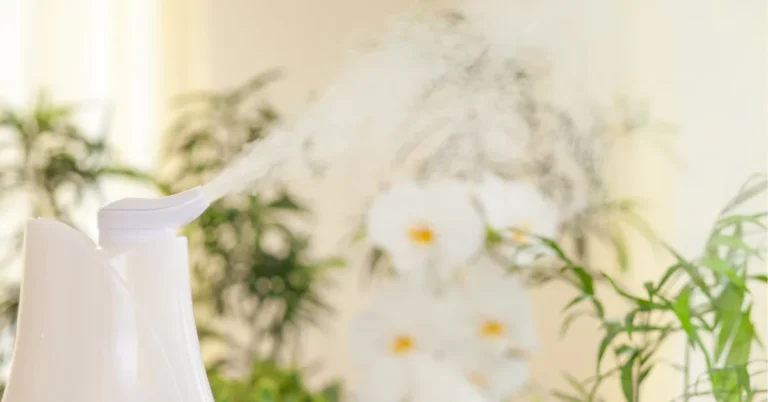Introduction
Ever noticed your humidifier isn’t quite doing its job, or maybe there’s a white, chalky buildup on its heating element? That’s mineral scale, and it could be cutting down your humidifier’s efficiency! It’s a common issue with humidifiers, especially in areas with hard water. But don’t worry—getting rid of it isn’t difficult, and it’ll have your humidifier running like new again in no time.
In this guide, I’ll show you how to clean your humidifier heating element properly and how to remove mineral scale without damaging your machine. Ready? Let’s dive into it!
Why Cleaning the Heating Element is Important

Before we get into the cleaning steps, you might be wondering—why is this even necessary? Can’t I just keep using the humidifier as it is? Well, not quite. Here’s why:
Scale Buildup Affects Performance
When mineral deposits (scale) build up on the heating element, it can block the proper release of moisture, making your humidifier far less efficient. Instead of a comforting mist, you get barely any output at all!
Health Concerns
Unclean humidifiers can harbor bacteria, mold, and mildew, which are then released into the air. This can cause respiratory problems or worsen allergies—especially for kids or those with asthma.
It’s Cheaper than Replacing Parts
Regular cleaning can extend the life of your humidifier. Why spend money on a new machine or costly repairs when a little maintenance can keep it running smoothly?
Step-by-Step Guide on How to Clean Your Humidifier Heating Element

Ready to get that humidifier heating element sparkling clean? Here’s the easy process:
Step 1: Unplug and Disassemble the Humidifier
Safety first! Always unplug your humidifier before you begin cleaning. Once unplugged, carefully disassemble the parts—most humidifiers will have a removable tank, tray, and heating element. Consult your user manual if you’re unsure how to disassemble yours.
Step 2: Inspect the Heating Element for Scale
Now, take a good look at the heating element. If you notice white, chalky deposits, that’s mineral scale. This buildup is common, especially in areas with hard water. Don’t worry, we’ll tackle it next.
Step 3: Cleaning with Vinegar and Water Solution
Vinegar is your best friend for removing scale!
- Mix a solution of 1 part vinegar to 2 parts water.
- Soak the heating element in this solution for about 30 minutes to an hour. The acidity of the vinegar will help dissolve the mineral deposits.
Step 4: Gently Scrub the Element
After soaking, use a soft brush (like an old toothbrush) to gently scrub away any remaining scale. Avoid using anything too abrasive, as it could damage the heating element.
Step 5: Rinse and Reassemble
Once all the scale is removed, rinse the element thoroughly with clean water. Make sure everything is completely dry before you reassemble the humidifier and plug it back in.
How to Remove Scale from Humidifier Heating Element
If you’re dealing with especially stubborn mineral deposits, here are some additional methods:
- Citric Acid Solution: If vinegar isn’t cutting it, try using a citric acid solution. It’s slightly stronger but still safe for most appliances. You can find citric acid in most stores or online.
- Avoid Harsh Chemicals: Don’t use bleach or strong chemicals on the heating element, as they could damage the metal or release harmful fumes when the humidifier runs.
Tips for Preventing Future Scale Buildup

Now that your humidifier’s heating element is clean, how do you keep it that way? Here are some easy tips to prevent future scale buildup:
Use Distilled Water: Tap water contains minerals that cause scale. Using distilled or filtered water in your humidifier will drastically reduce the amount of scale that forms.
Set a Regular Cleaning Schedule: Make it a habit to clean your humidifier every 1-2 weeks, especially during heavy use. This keeps the scale from building up in the first place.
Try a Humidifier Cleaner: You can also use a humidifier cleaning solution, which is designed to prevent scale buildup while being gentle on your machine.
Can You Use Dish Soap to Clean a Humidifier?
You might be tempted to reach for dish soap, but here’s the thing: dish soap isn’t great for cleaning the heating element.
While it’s fine for scrubbing the tank or other non-heating parts, it won’t effectively break down the mineral scale. Plus, dish soap residue can linger and create bubbles when you use the humidifier, which is definitely not what you want!
Instead, stick to vinegar or citric acid solutions for the heating element.
How to Clean a Whole House Humidifier

If you’ve got a whole-house humidifier, the process is a bit different but still manageable. Here’s a quick guide:
- Turn off the system and cut off the water supply.
- Remove and clean the water panel (sometimes called a filter or pad). Soak it in vinegar if there’s heavy scale.
- Wipe down the rest of the system, including the tray and base, using a mixture of vinegar and water.
- Flush the system to remove any loose scale and debris.
Conclusion
Cleaning your humidifier heating element is a quick and easy way to ensure your home stays comfortable and your air quality stays high. By following these simple steps and incorporating regular maintenance, you can avoid costly repairs and keep your humidifier running efficiently for years to come.




